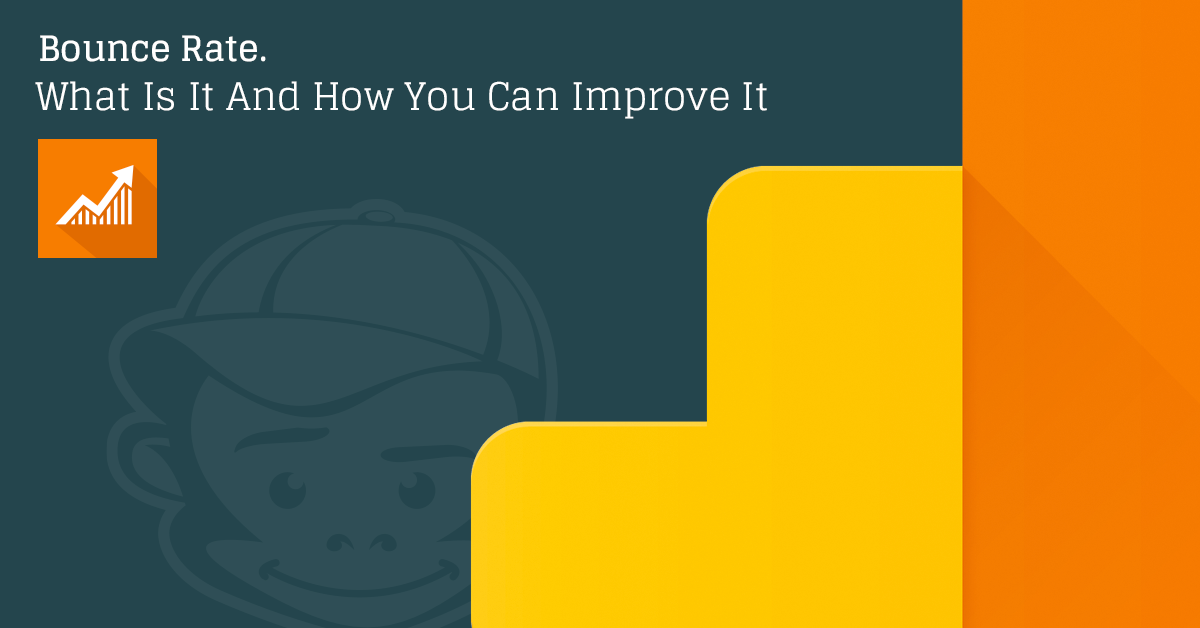We often get asked about bounce rates. What exactly does it mean, and is it a bad thing to have a high bounce rate?
As monkeys we like to bounce around… a lot.
But when it comes to your website, having a high bounce rate could be a bad thing.
So let’s jump into what it means and ways you can improve it.
What does bounce rate mean?
A bounce is a single-page session on your site. It’s when a user only triggers a single request to the analytics server.
It doesn’t matter if a user clicked onto a page, read every single last word of a 7,000-word article, and left entirely satisfied – if they closed the tab without exit clicking, that session is logged as a bounce.
Google’s definition of bounce rate is:
Bounce rate is single-page sessions divided by all sessions, or the percentage of all sessions on your site in which users viewed only a single page and triggered only a single request to the Analytics server.
These single-page sessions have a session duration of 0 seconds since there are no subsequent hits after the first one that would let Analytics calculate the length of the session. Learn more about how session duration is calculated.
Is a high bounce rate a bad thing?
It really depends on your website and the page which has the high bounce rate.
If the success of your website depends on users viewing more than one page, then yeah, a high bounce rate is a bad thing, obviously.
For example, on eCommerce sites that have a product page and checkout, having a high bounce rate on either of those pages should be concerning.
Or a homepage which is the gateway for a lot of other pages on your site. If everybody is bouncing and not going to those other pages. There is an issue.
Let’s make some sense of the numbers:
- 25% or lower: Something is probably broken, cause those are great numbers.
- 26-40%: Excellent
- 41-55%: Average
- 56-70%: Higher than normal, but could make sense depending on the website
- 70% or higher: Bad and/or something is probably broken

How to improve bounce rate
You want to lead your users on a journey, or what we like to call them, adventures!
If you have an amazing blog post that is getting lots of traffic but people are bouncing on it, think about it from the user’s perspective.
They have read the post, but now what? Have you given them instructions or enabled them to take action on anything else?
Let’s take a look at different ways you can improve your bounce rate.
1. Use a logical and useful internal linking structure
You should have related content that you can link to. If you don’t, that’s an issue in itself and you should consider a better content strategy.
Linking to other pages on your site within your content is not only good for SEO but will drastically help your bounce rates by giving the user more options.
For example, at the end of a blog post, have something as simple as “All done reading? Have you checked out (insert link here)?”
2. Include a clear call-to-action to things like resources, mailing list sign-ups, donate now
Creating an attractive call-to-action promoting things like whitepapers or other resources, a way for users to sign up to stay connected with you, and if you’re a nonprofit, you should definitely have a donate call out.
Don’t assume people are going to see your Donate Now button at the top of your site or in the footer.
Having in-content CTA’s is a great way to help the user along their journey.
3. Optimize page load time
Did you know that 40% of people abandon a website that takes more than 3 seconds to load? This could be a big reason why people are bouncing.
Site speed is also an important ranking factor for Google. So make sure to optimize those images and scripts being loaded.
Want to test how your site stacks up? Check out Google’s PageSpeed Insights tool
4. Better mobile experience
If you’re digging around in Analytics to notice your bounce rate, chances are, you’ve seen the percentage of users who are visiting your site from mobile devices.
If I would have to guess, that percentage would be above 50% of your total users.
Having a well-optimized mobile experience is very important. Pull up your site on your phone. How does it perform? Note the things which could be fixed.
5. Better design and UX
What is UX you might ask?
UX (user experience) is how a person feels when interfacing with a system. This includes a website, web application, desktop software, and basically any form of human/device interaction.
So why is it important?
To put it simply, UX is important because it tries to fulfill the user’s needs.
When somebody comes to the website and the design is poor, the text is too small, the colors make it hard to read and the main navigation is easily missed. Do you think that fulfills a user’s needs?
Probably not. And if their needs aren’t being fulfilled, they’re probably likely to bounce away.
Wrapping it all up
As you can see by just looking at the number given to us under the bounce rate column, it could mean a whole lot of things to look into or things that might need to be improved.
This is a good thing. You always need to be improving and optimizing!






